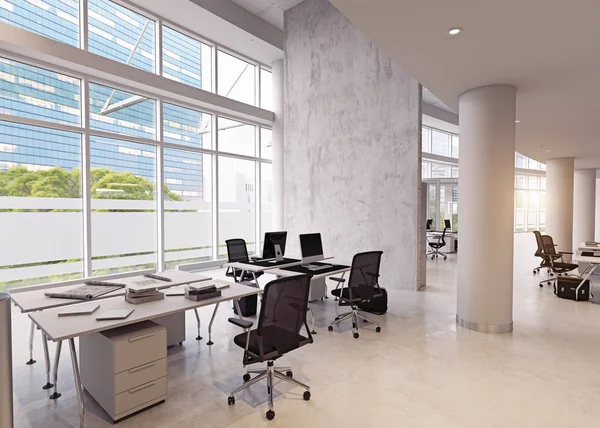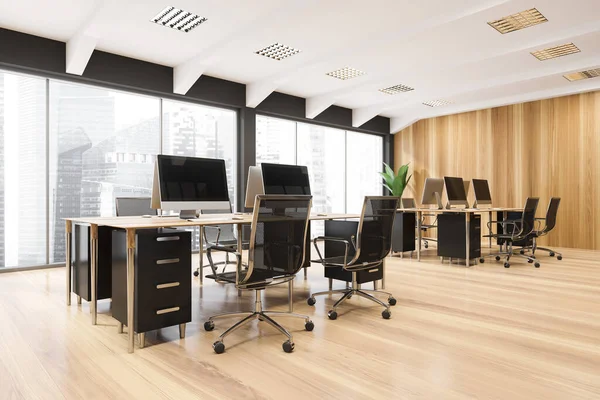Crafting Flexible Office Spaces: Strategies To Boost Workplace Productivity Efficiently
In today’s fast-paced work environment, the traditional office layout is evolving. The modern office must cater to a variety of needs, balancing between collaboration, focus, and flexibility. Designing a flexible office space is crucial for fostering productivity and accommodating the diverse working styles of employees. This article explores key strategies for creating a workspace that maximizes productivity while adapting to the ever-changing demands of the modern workforce.
Understanding the Concept of Flexible Office Space
Flexible office space is designed to accommodate different work styles and tasks, ranging from individual focus work to team collaboration. It moves away from a one-size-fits-all approach and instead provides a variety of environments that can be easily reconfigured as needed. This flexibility is essential in supporting diverse work needs and preferences, enhancing overall productivity.
The Evolution of Workspaces
The traditional office model, characterized by fixed desks and rigid cubicles, is increasingly being replaced by more fluid and dynamic designs. This shift is driven by several factors, including:
- Technological Advancements: The rise of digital tools and remote work capabilities has diminished the need for static workstations, allowing for more fluid workspace arrangements.
- Cultural Shifts: Modern work culture emphasizes collaboration, agility, and employee well-being, necessitating office designs that support these values.
- Business Agility: Companies need to adapt quickly to market changes and project demands, requiring office spaces that can be easily reconfigured.
Key Strategies for Designing Flexible Office Space
Create Zoning for Different Activities
A well-designed flexible office space should include distinct zones for various activities. For example, a quiet area for focused work, collaborative spaces for team meetings, and informal lounges for casual interactions. By creating these separate zones, employees can choose the environment that best suits their current task, thereby enhancing their productivity.

Incorporate Modular Furniture
Modular furniture is a cornerstone of flexible office design. It allows for easy reconfiguration of workspaces to meet changing needs. Modular desks, movable partitions, and adjustable seating can be rearranged to create different layouts and accommodate various group sizes. This adaptability ensures that the office can quickly respond to changes in team dynamics or project requirements.
Emphasize Ergonomics and Comfort
Productivity is closely linked to comfort and ergonomics. Invest in ergonomic chairs, adjustable desks, and proper lighting to support employee well-being. A comfortable workspace minimizes physical strain and distractions, allowing employees to focus more effectively on their tasks.
Use Technology to Enhance Flexibility
Integrating technology into the office design can significantly enhance flexibility. Wireless communication tools, cloud-based collaboration platforms, and smart office systems allow employees to work seamlessly from different locations within the office. Additionally, technology can facilitate easy booking of meeting rooms and collaborative spaces, ensuring that these areas are utilized efficiently.
Foster a Collaborative Environment
While individual workspaces are important, fostering a collaborative environment is equally crucial. Design spaces that encourage interaction and teamwork, such as brainstorming rooms, open meeting areas, and casual lounge spaces. By promoting collaboration, you can enhance creativity and problem-solving, which are key drivers of productivity.
Challenges and Considerations
Adapting to Individual Preferences
One challenge in designing a flexible office space is accommodating the diverse preferences of employees. While some may thrive in an open-plan environment, others might prefer more private spaces. It’s important to offer a variety of work environments to cater to different preferences and ensure that everyone has access to the type of space they need to be productive.

Balancing Flexibility with Structure
Finding the right balance between flexibility and structure can be challenging. An overly flexible space may lead to a lack of organization and inefficiencies, while too much structure can stifle adaptability. It’s important to design an office that offers enough flexibility to accommodate changing needs while maintaining a level of organization that supports effective workflows.
Challenges and Considerations
Adapting to Individual Preferences
One of the challenges of flexible office design is accommodating the diverse preferences of employees. While some may thrive in open-plan environments, others may require more privacy. To address this, offer a range of workspace options and personalization features, such as adjustable partitions and customizable workstations.
Balancing Flexibility with Structure
Finding the right balance between flexibility and structure is crucial. An overly flexible environment may lead to disorganization and inefficiency, while too much rigidity can hinder adaptability. Design an office that provides enough flexibility to accommodate changing needs while maintaining a clear organizational structure.
Privacy and Security
Privacy and security are important considerations in a flexible office design. With open layouts and shared spaces, it is essential to incorporate features that protect sensitive information and ensure confidentiality. This may include secure storage solutions, private meeting rooms, and access control systems.
Future Trends in Flexible Office Design
As the nature of work continues to evolve, so too will the design of flexible office spaces. Future trends may include:
- Biophilic Design: Incorporating natural elements into the office environment, such as indoor plants and natural light, to enhance well-being and productivity.
- Sustainable Practices: Designing offices with sustainability in mind, including energy-efficient systems, eco-friendly materials, and waste reduction strategies.
- Enhanced Technology Integration: Advancements in technology will continue to shape office design, with the integration of AI, IoT, and smart systems to create even more responsive and adaptable work environments.
Overcoming Challenges in Flexible Office Design
Addressing noise and distractions is a significant challenge in open and flexible office environments. Acoustic solutions such as acoustic panels, sound masking systems, and soft furnishings can absorb and reduce noise. Designating quiet zones for uninterrupted work and providing employees with noise-canceling technology, like headphones or white noise machines, helps mitigate distractions.
Effective space allocation is another challenge, requiring careful design to maintain organization and efficiency. Flexible layouts using modular and reconfigurable furniture allow spaces to adapt to different needs. Regular assessments of space utilization and employee feedback ensure that layouts and furniture arrangements remain effective and relevant.
141 Camberwell Rd, Hawthorn East, Vic, 3123

